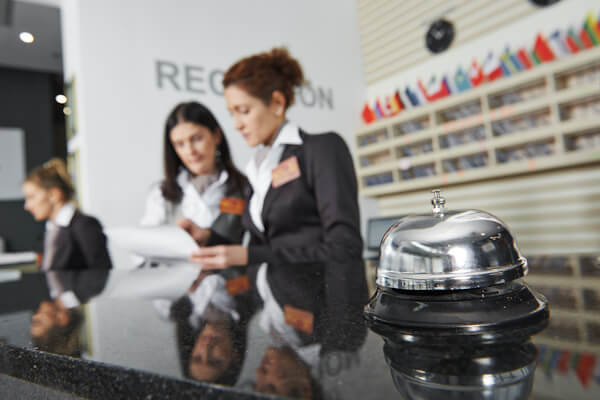Social Media Comes of Age
Savvy hospitality marketing professionals have been exploring and implementing social media marketing since the advent of the term Web 2.0 in 1999. However, it was not until 2003 that the first customer-led associations with this platform were highlighted by the O’Reilly group. They said, “customers are building your business for you” and suggested that the activities of users generating content in the form of ideas, text, videos, or pictures could be “harnessed” to create value. Social media’s value is based upon the actions of users- including creating and sharing content. For social media managers this means that the medium is hard to control and value can be elusive.
Given the fact that we have been working with social media for almost 10 years, is there a return for the average hotel or restaurant? Has social media grown up to the point that we are fully utilizing its potential for value as the O’Reilly group envisioned in 2003? While clearly no longer in its infancy, is social media like a greedy teenager that draws time and resources and gives little in return? Or has it matured and changed the way we should view our role as marketers and managers?
Who owns the marketing message?
At its core, social media is not a marketer’s platform. It belongs to customers. Customers are shaping our image. Given this truth, how do we best exploit social media to drive new business? Traditional branding and carefully crafted marketing messages will only get hospitality businesses so far; it is often user generated content, such as online reviews, that drives the customer’s final choice. There is certainly still a need for traditional marketing, but blending it with social marketing to expand customer interaction should be the central objective for today’s hospitality managers. The goal of marketing has always been to get people to take action; now social media empowers your customers to get others to take action. Our role as marketers is to support and inspire our customers to spread the word.
Real Benefits of Social Media
Word-of-Mouth Marketing
The proliferation of information on the web can sometimes make life harder for customers rather than easier. A recent column in The American Interest by Mead states, “the internet is an amazing way to get information about products or services you might want, check prices, explore options and generally make better and more informed decisions. The trouble is that for most of us — there is too much of it.” Faced with a “fire hose of information” customers look to social media to find out what their friends think, suggest, and follow. Never has crowd sourcing travel information been easier and often seeing friends’ likes or posting a request for suggestions for a hotel or restaurant is a first step for potential customers. The role of social media in word-of-mouth marketing cannot be overlooked. In fact, Nielsen reports that 90% of customers trust word-of-mouth marketing where only 33% of customers trust online ads. In a crowded media world, word-of-mouth marketing is one of few highly trusted influence methods remaining.
Web Traffic
Early in the online marketing discipline, web traffic generation was the central goal. Now, with the increasing sophistication of websites, online commerce and social integration customers are looking for more value from their time spent browsing. Social media engagement is a great way to drive value for your customers and eyeballs to your website. Integrating social sharing to hotel brand websites increased web traffic as much as 12% according to L2. When most hotels list their brand site as their largest marketing budget item, social media integration is one of best ways to make that investment pay off and drive more revenue. Simply put, more page views mean more bookings.
Even the social component of OTAs can help drive traffic and bookings to brand sites. Cornell University’s Chris Anderson studied approximately 2,000 bookings on IHG.com (InterContinental Hotels Groups’ direct websites) and was able to track where those consumers had previously gone online. He found that roughly 62% of IHG.com consumers visited Expedia before booking on IHG.com. This means that a hotel that is actively managing and improving their online reputation will drive more traffic to their direct site. With customers using OTAs to comparison shop, they are filtering data to find who has the best reputation, and a good reputation drives traffic. Anderson says, “For each reservation at Expedia, there’s two to three or more that are made at a brand direct channel that are impacted by Expedia.”
Customer Preference Information
Traditional surveys are becoming a thing of the past for many hospitality companies. Realizing the power of reviews to drive business, many Revinate customers have opted to discontinue their traditional GSS surveys and focus their efforts on driving customers to write reviews and using Revinate to track customer feedback. A wealth of unprompted customer preference data can be found by mining review data. Customer feedback learned from online reviews is also not limited by the bias that traditional survey questioning can involve. Management can learn things about the customer experience that they never might have known to ask in a traditional survey. And statistical analysis of data can make hot button customer issues easy to spot.
Twitter is rapidly becoming an important customer service channel. When you browse the Twitter accounts of major brands, you will find many examples of companies responding to customer service inquiries and rectifying bad situations. Seventy-two percent of hotels reported to L2 that they needed to manage customer service related tweats. This can be both a good and bad thing. Since the medium is asynchronous, hospitality businesses require less staff to handle customer service complaints, but need to ensure they respond quickly to make things right since it is a public forum.
Competitive Benchmarking
Learning about the strengths and weaknesses of competitive properties has never been easier due to the expansion of public review data. Again, an online reputation management tool like Revinate can help comb through this data to create actionable competitive intelligence. Exploiting a competing hotel’s renovation complaints or bad review trends can drive customers to your business.
Revenue managers who actively monitor social media resources can gain insights in a number of ways. Often, rate comparison reports often fail to take popularity into account. A report that monitors comp sets based upon traditional metrics such as number of rooms, location, quality level, and pricing might miss a new competitor that is highly ranked on social pages like TripAdvisor. The social media pages of competitors can be a great place to learn about last-minute offers. Often these last minute offers can take some time to filter down to competitive pricing reports. The growth of mobile users, has made last minute offers a critical new component to competitive benchmarking. Social media awareness ensures that revenue managers can keep their hotels competitive from minute to minute while maximizing profit.
Reputation is as Important as Brand
With the power that customers have to influence hotel or restaurant image, your online reputation is central to your success. Perceived image which is driven by customer word-of-mouth is beginning to trump expensive branding communication. Hotel and restaurant chains can spend millions promoting their brand, but differences in quality levels from one location to the next are easily noticed by customers who read online reviews. Gone are the days when customers will trust every outlet in a chain simply due to brand affinity.
Coming of age
Has social media come of age, or we are just now learning to understand its advantages and limitations? By viewing social media marketing as the customers’ platform and not the marketers’ platform we can change our view of what we expect it to do for us. User-driven content is user-controlled. We can try to shape the conversation about our businesses by striving for high quality engagement with our customers. We can try to foster positive word-of-mouth marketing with outreach programs to gain followers and exemplary service. But, if we view social media only as a way to push marketing messages that drive bookings, then engagement with customers will falter and impact will drop. Social Media can help us learn how to please our customers, thwart our competitors, and market our services in the way that our customers desire.
Related Posts

Insights that drive results
Subscribe now to get the latest content
This site is protected by reCAPTCHA and the Google Privacy Policy and Terms of Service apply. *Required fields.



